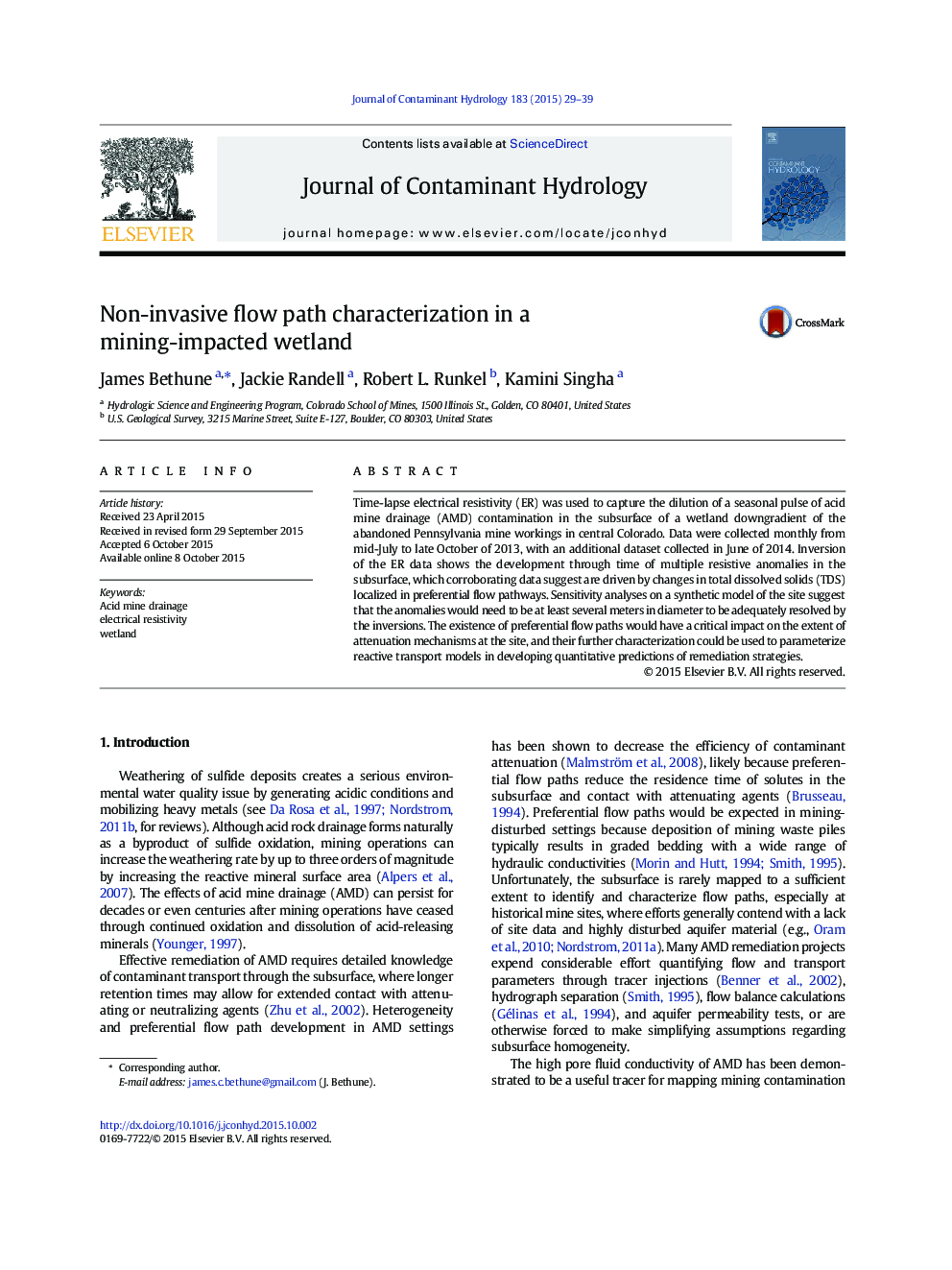| Article ID | Journal | Published Year | Pages | File Type |
|---|---|---|---|---|
| 4546377 | Journal of Contaminant Hydrology | 2015 | 11 Pages |
•We use time-lapse resistivity to non-invasively characterize subsurface acid mine drainage transport.•We investigate the field-scale resolution capabilities of time-lapse resistivity.•Contamination breakthrough timing is consistent with a protracted first-flush of mine water.•Subsurface contamination transport appears to be localized in discreet pathways that are approximately 5–10 m in diameter.
Time-lapse electrical resistivity (ER) was used to capture the dilution of a seasonal pulse of acid mine drainage (AMD) contamination in the subsurface of a wetland downgradient of the abandoned Pennsylvania mine workings in central Colorado. Data were collected monthly from mid-July to late October of 2013, with an additional dataset collected in June of 2014. Inversion of the ER data shows the development through time of multiple resistive anomalies in the subsurface, which corroborating data suggest are driven by changes in total dissolved solids (TDS) localized in preferential flow pathways. Sensitivity analyses on a synthetic model of the site suggest that the anomalies would need to be at least several meters in diameter to be adequately resolved by the inversions. The existence of preferential flow paths would have a critical impact on the extent of attenuation mechanisms at the site, and their further characterization could be used to parameterize reactive transport models in developing quantitative predictions of remediation strategies.
